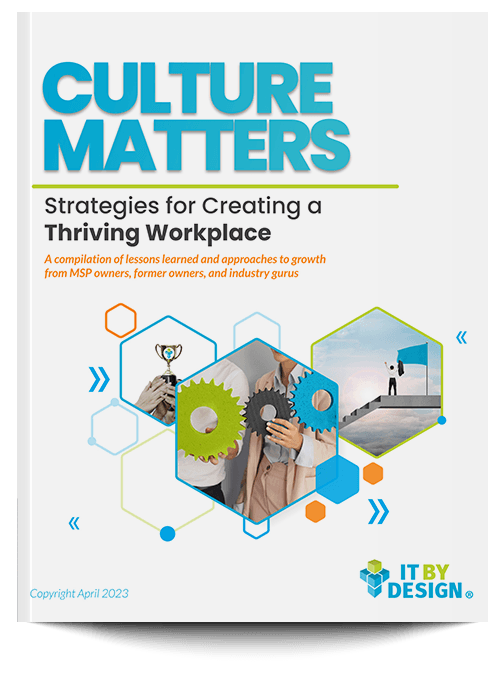Employers around the world have been struggling with talent recruitment and retention over the last few years thanks to The Great Resignation. The MSP channel has seen many employees leave for higher wages and have had to recruit employees at far higher compensation packages than we have seen before. While these challenges persist, now we are also dealing with employees “Quiet Quitting”. While some employers are criticizing these employees as being lazy and not wanting to work, research indicates that there are different causes all together and that Quiet Quitting is, in fact, a response to a lack of engagement in the workplace.
In a Gallup poll from September 2022, researchers found that “Quiet Quitters make up at least 50 percent of the U.S. workforce ― probably more.” This same study also found that 18% of employees were actively disengaged and looking for alternative employment – meaning that only 32% of the workforce is engaged with their employers and work. This is a startling statistic: Less than one third of the workforce is fully engaged.
So let’s begin by getting clarity about what we’re talking about. Quiet Quitting is when employees fulfill their contractual obligations, as per their job description. They are doing everything that they’re required to do. The problem is that they’re not doing any of the “extra” things that aren’t included in their job descriptions. These extra things include:
- Not doing any tasks beyond their assigned duties
- Not helping coworkers
- Not showing up early
- Not staying late
- Not putting in extra hours to complete important projects
- Not attending non-mandatory meetings
- Not volunteering for ‘extra’ projects / committees
- Not introducing new ideas and work practices
- Not psychologically invested in work
It’s difficult to ensure that job descriptions encapsulate all these extra duties. We can’t add “plan Bob’s retirement party” as a job requirement. We know that organizations regularly rely on people “stepping up” to do additional tasks. Organizations that have this type of a workforce have a critical competitive advantage. It’s important to note that the value of these extra things come from employees choosing to do them of their own free will – not by having these tasks assigned as required duties. These extra behaviours are referred to as Organizational Citizenship Behaviours – remember this phrase, because OCB is important. These are behaviours that are positive and constructive, supports their colleagues, and benefits the organization.
Root Causes of Quiet Quitting
The research on this topic identifies Quiet Quitting as a response by employees to poor management. Employees do not feel that the organization is investing in their growth and development; the organization doesn’t care about them or their health; the organization sees them as replaceable cogs in a machine rather than allowing them to show up as their whole authentic self. The compounding problem is that managers experienced the greatest drop in engagement over the past few years, which means it’s the senior leaders who need to start making changes if we want to effectively address Quiet Quitting in our organizations.
We’ve seen it time and again in the channel. We take our best engineer and promote them to manager, without providing them with the necessary leadership training. How can managers be expected to have engaged teams if they have never been taught how to do that? If managers feel like senior leaders aren’t investing in their success, how can they convince their team members that the organization is invested in them as individuals? There is a need to provide existing and emerging leaders with leadership training and development opportunities, like Build IT‘s Communities of Practice.
Addressing the Need to Belong
The solution to Quiet Quitting is the active, intentional building of an inclusive culture. Inclusion has three key components: Equality, Belonging, and Openness. There is equality when employees can see that success is directly linked to performance rather than some other intangible factor. Belonging is fostered at 3 levels: the organization, the leadership level, and the peer and department level.
Some new online platforms can help with this. IT By Design‘s Team GPS encompasses five different critical areas – from rewards and recognition to performance management – that MSPs can use to keep employees engaged and build a welcoming culture. While human resources should drive any kind of solutions, not all small- to medium-sized MSPs have an HR department. This is where resources like Team GPS can prove very beneficial.
People need to feel like they individually matter to each of these different levels. Openness is closely tied to psychological safety and requires the most intentionality by senior leaders. Employees need to feel safe from ridicule and reprimand, to express their thoughts, ideas, and concerns.
So what do we need to do? We need to invest in our next layer of leaders and ensure that every individual that has people responsibilities has formal leadership training. No longer can you just promote the most technical individual, now, you need to invest in your most teachable leaders.
Kam Kaila, President of IT By Design, writes a weekly blog, “Candid Kam”, where she gives her perspective on various topics that are vital to the success of MSPs. Click here to subscribe and read her latest entry on Quiet Quitting.








